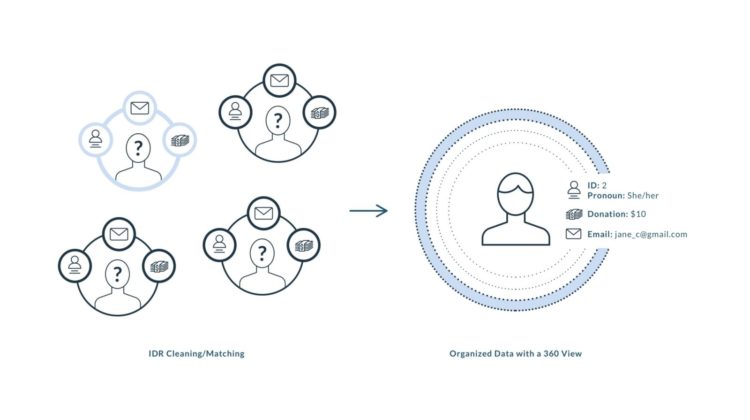Data Integration & Identity Resolution for the Human Rights Campaign (original) (raw)
THE CHALLENGE
The Human Rights Campaign (HRC), the nation’s largest civil rights organization working for LGBTQ equality, had millions of records in its CRM database and an increasing number of data sources — an enviable rolodex by nearly any standard. But as HRC’s supporter base expanded, managing this data grew more challenging, meaning constituent engagement efforts were neither as effective nor as efficient as the organization desired.
Civis Analytics’ data warehouse, reporting tools, and Identity Resolution (IDR) technology allowed HRC to take back control of its data, freeing up critical staff time and financial resources to enhance engagement with constituents and refocus on HRC’s fundamental purpose: boosting pro-equality candidates to victory up and down the ballot, and advancing its mission of freedom and inclusion for all.
OUR APPROACH
When HRC first reached out to Civis, it had data flowing into its CRM from numerous apps and platforms — everything from fundraising and contact information to event ticket sales and volunteer activity. Despite HRC’s experience building out data integrations with multiple vendors, the pace of supporter data acquisition was accelerating, and the cost, time, and effort of building those integrations were growing. In addition, many of HRC’s records were siloed, including the voter and constituent data held in the VAN platform.
HRC needed more powerful tools to ensure its digital outreach campaigns were fueled by data that was accurate and free of duplicates. For example, teams needed to be certain they were using the correct names for transgender individuals, and that they didn’t waste resources reaching out to the same person multiple times.
THE SOLUTION
Initially, HRC met with multiple firms and even considered building out its own data warehouse. However, the cloud-based Civis Platform was designed and built to automate the data extraction, transformation, and loading (ETL) process, enabling users to import, deduplicate and unify data from multiple vendors and to configure pipelines for cleaning and preparing that data in one central location, democratizing access and insights to authorized stakeholders across the organization.
Civis’s IDR technology (which generates a unique identifier for each individual in your records, enabling you to match them up and deliver more personalized, relevant messaging) and suite of tools (from predictive analytics and integrated Tableau reporting to Golden PII solutions) also made it clear that no other approach was as robust. Moreover, only Civis’s solutions allowed HRC to bring its reporting and analytics — all previously outsourced — in-house.
HRC collaborated with Civis on the specifications, and Civis provided guidance on the early development of a prototype that HRC built. HRC then handed back the reins while managing quality control, reviewing records, and evaluating results as Civis incorporated changes and produced a finished, free-standing pipeline. The integrated system tied all individuals to their data across HRC’s many inputs, allowing the organization to draw from one unified, automatically updated source: no more stress about duplicates, no more data siloed by platform or source, and no more manual uploads/downloads.

“HRC is Now Back in Control of its Data.”
“It has increased confidence in the accuracy and scalability of what it owns and has greater peace of mind when planning outreach. The organization also freed up significant staff hours and realized notable cost savings, allowing it to enhance fundraising and invest more into advocacy, with impressive results in the 2018 midterm elections.”
The Results
- Electoral Success
With the addition of a data warehouse and a robust ground game, HRC was able to invest unprecedented resources to achieve a clean sweep in its priority 2018 Senate races, and HRC scored a raft of victories for pro-equality candidates for Congress and statewide office. - Cost Savings
Realized almost $200,000 in cost savings annually in addition to reduced staff time. - Reduced Staff Time
Saved workload equivalent of one full-time employee.
